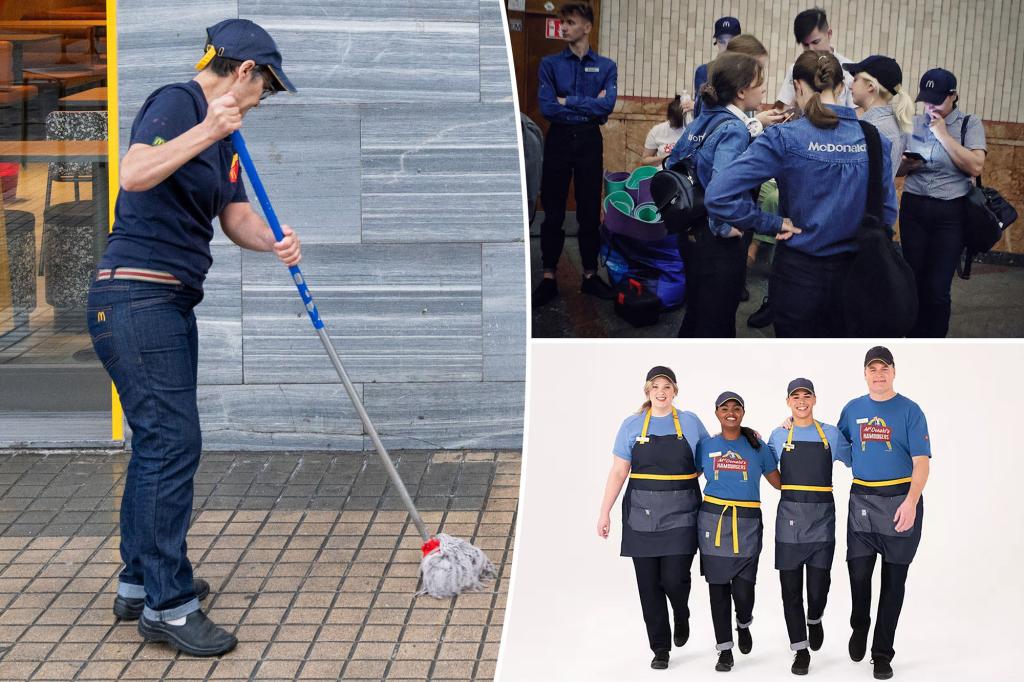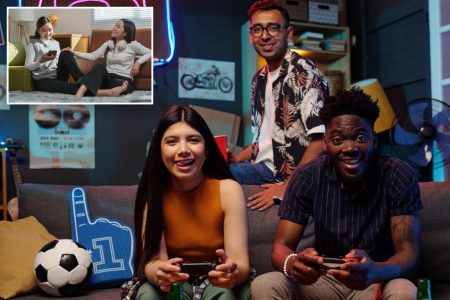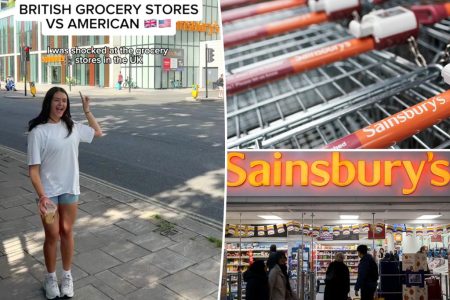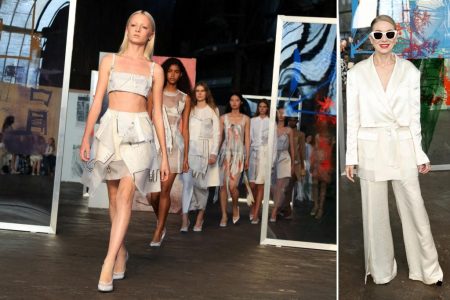McDonald’s Fashion Phenomenon: European Employees Serving Style Alongside Fast Food
In an unexpected collision of fast food and fashion, McDonald’s employees outside the United States are turning heads with their stylish uniforms, particularly a pair of form-fitting “McJeans” that have captured the internet’s imagination. What began as a casual TikTok video has evolved into a viral sensation, amassing over 8.1 million views and sparking a global conversation about the surprising style quotient of McDonald’s international staff attire. The video showcases two European McDonald’s workers effortlessly sporting well-tailored blue jeans featuring a subtle yet distinctive McDonald’s “M” logo embroidered on the back-right pocket—a far cry from the utilitarian uniforms typically associated with fast-food chains. The creator’s simple caption, “@McDonald’s Europe has branded McJeans. Holla at ya boy with a pair,” unleashed a flood of enthusiastic responses, with commenters exclaiming everything from “She’s serving and then serving” to “These are so McCute” and the playful “McApple bottom jeans ahh.” This unexpected “McMerch” discovery has clearly struck a chord with fashion-conscious consumers who suddenly find themselves craving more than just burgers and fries from the global food giant.
This revelation highlights McDonald’s unique approach to staff uniforms across different regions, where the company grants considerable creative freedom to adapt attire to local sensibilities while maintaining brand consistency. Across Europe and beyond, the fast-food chain has embraced regional variations that often reflect local fashion sensibilities. In countries like Poland, Brazil, Ukraine, and the Netherlands, denim appears to be the material of choice, manifesting in various forms including jeans, shirts, and even aprons that combine functionality with contemporary style. The United Kingdom takes a distinctly casual approach, with employees sporting a relaxed yet coordinated look comprising T-shirts, jeans, and even on-trend bucket hats that feel more streetwear-inspired than corporate uniform. This regional customization represents a thoughtful fusion of brand identity with cultural relevance, allowing McDonald’s to maintain its iconic status while simultaneously integrating into local fashion contexts.
The diversity in McDonald’s international uniforms extends beyond casual denim, with some regions opting for more sophisticated approaches to employee attire. France, known for its fashion-forward sensibilities, has embraced a minimalist aesthetic with sleek black-on-black ensembles that evoke the country’s reputation for understated elegance. Perhaps most impressive is Portugal’s commitment to elevating fast-food fashion, where the company commissioned professional fashion designer Katty Xiomara to create business-casual uniforms featuring thoughtful details like embroidered scarves and stylish cardigans. These more refined approaches demonstrate McDonald’s understanding that employee uniforms serve not just practical purposes but also communicate brand values and respect for local aesthetic traditions. The attention to design and quality in these European uniforms suggests a recognition that employees are brand ambassadors whose appearance significantly impacts customer perception.
In contrast to these fashion-forward international interpretations, McDonald’s American uniforms prioritize functionality, sustainability, and practicality—though they’re not without their own design considerations. Last year, U.S. locations introduced sustainable uniforms featuring aprons, jeans, and T-shirts manufactured from recycled plastic, highlighting the company’s growing environmental consciousness. American McDonald’s jeans and other uniform elements were created by Affinity brand designer Bindu Rivas, indicating that even the more utilitarian approaches receive professional design attention. The striking difference between the American and European approaches to McDonald’s uniforms reflects broader cultural distinctions in workplace attire expectations and fashion priorities across continents. While European iterations often embrace more visible style elements, the American approach balances basic functionality with increasing emphasis on sustainability credentials—different paths to expressing contemporary values through employee clothing.
The viral fascination with McDonald’s international uniforms parallels the company’s long-established practice of adapting its menu to suit local tastes and cultural preferences around the world. Just as the “McJeans” represent a localized approach to employee presentation, menu items like the Philippines’ McSpaghetti or the Netherlands’ McKroket (a deep-fried croquette sandwich) demonstrate the company’s willingness to modify its core offerings to resonate with different cultural contexts. This dual customization of both food and fashion highlights McDonald’s sophisticated understanding of glocalization—maintaining global brand consistency while honoring local distinctions and preferences. The viral response to the European McJeans suggests that consumers are increasingly attentive to these thoughtful adaptations and appreciate when global brands demonstrate cultural sensitivity and regional awareness, whether through menu innovations or employee attire.
The unexpected popularity of McDonald’s European uniforms opens interesting questions about the future intersection of fast food, fashion, and brand merchandising. The enthusiastic public response to these stylish McJeans suggests untapped potential for McDonald’s to expand into fashion merchandise that consumers might actually want to wear—not as ironic statements but as genuinely desirable items. While the company has not yet responded to inquiries about making these uniform elements available to the public, the viral moment represents a potential opportunity to extend the brand into new territory. In an era where unexpected fashion collaborations between disparate brands have become increasingly common and successful, the possibility of McDonald’s leveraging its iconic visual identity through thoughtfully designed apparel doesn’t seem far-fetched. Whether or not McDonald’s chooses to capitalize on this viral moment, the McJeans phenomenon demonstrates how even the most established global brands can still surprise consumers and capture cultural attention through seemingly minor details like employee uniforms, proving that in today’s interconnected world, inspiration and influence can emerge from unexpected sources and cross both cultural and industry boundaries with remarkable ease.















